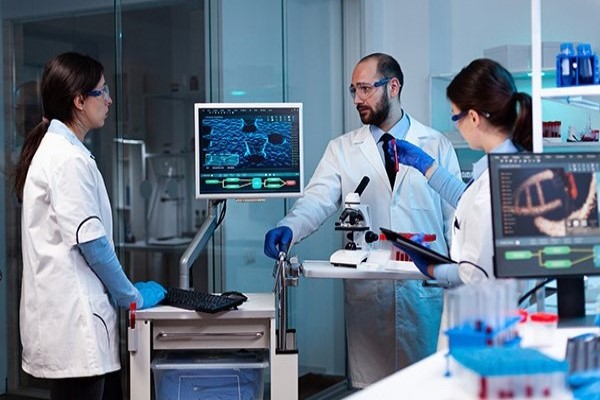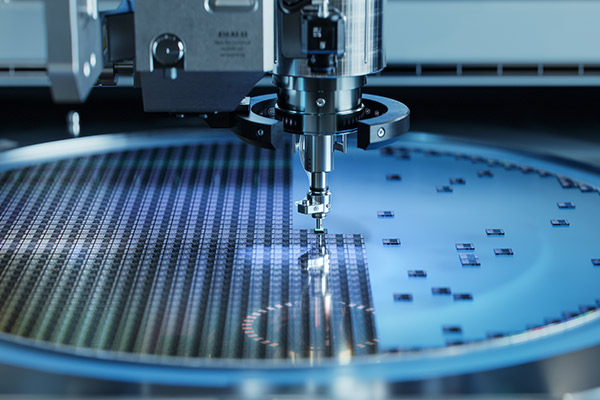How IoT technology empowers AI
This post was sponsored by AT&T Business, but the opinions are my own and don’t necessarily represent positions or strategies of AT&T Business.
Since the very first Internet of Things (IoT) devices entered the market we’ve seen just how these networks of connected devices can produce an immense flow of data. In essence, it’s a goldmine of data that can lead to incredible insights and powerful real-time applications.
But making the most out of all this data requires a bit of help: applications that can work through vast quantities of data securely, reliably and of course, at speed. We’ve seen plenty of these over the years but the artificial intelligence (AI) revolution is advancing momentum by providing the intelligent computing capabilities that can truly make the most of IoT data streams.
The vital role of AI in IoT technology
The Internet of Things (IoT) is the network of physical objects, or "things", that are embedded with sensors to collect data. These devices are enhanced with connectivity (5G and/or Wi-Fi) to connect and exchange data with other devices and systems, all over the internet.
Devices range from everyday household items like refrigerators and thermostats to sophisticated industrial manufacturing tools and healthcare equipment. IoT devices monitor a wide range of parameters such as health metrics, temperature, air quality, energy consumption, and machine performance. This data can be analyzed in real time to identify patterns, trends, and anomalies.
Artificial Intelligence (AI) is the branch of computer science that deals with systems that perform functions that would normally require human intelligence.
In the context of interconnected devices and systems, AI affords a crucial role in analyzing and interpreting the vast amounts of data generated. AI can be embedded into components, such as programs and chipsets—or the AI may be performed centrally.
The 5 pillars of IoT optimization
To see how AI can have a huge impact on IoT, let’s first look at the ‘five pillars’ that underpin it—the five central elements that make up ‘the magic of IoT’. These are Create, Communicate, Aggregate, Analyze, and Act, and represent the fundamental stages of data processing in an IoT system:
Create: Refers to data generation, as data is collected by various sensors and devices that are capable of transmitting data from one location to another. These devices gather vast amounts of data to improve application functionality and process information.
Communicate: Once the data is created, it needs to be communicated or transmitted within the network. IoT technology allows objects to communicate with each other continuously, forming large, interconnected systems.
Aggregate: Data is then sent from what could be millions of devices to be aggregated. This aggregation allows the data to be processed as a whole, providing a comprehensive view of the information. Technical and legal standards allow data to be aggregated across different systems.
Analyze: Aggregated data is analyzed to extract valuable insights. This pillar is what makes IoT applications so powerful and useful. Analytics is performed through the application of data analysis tools and procedures to the generated data types. Data becomes more valuable information once the data is processed.
Act: This pillar refers to the responses of people or systems to the insights derived from the analyzed data. These actions connect to business outcomes, systems and tools, enabling the IoT system to provide value and drive decision-making processes.
These five pillars serve as a compass for subsequent decisions across the design areas in the IoT workload. They help clarify considerations to ensure your IoT workload meets requirements across architecture layers and also serve as a particularly useful way to analyze how AI works hand in hand with IoT—every step of the way.
Key benefits of AI and IoT technology
AI significantly enhances the execution of each of the five pillars of IoT. AI does so by augmenting computer and human abilities with sophisticated computer models that apply human-like—and indeed superhuman—judgment to the vast pools of data generated by IoT.
Create: Manufacturers can use AI to enhance the functionality of sensors and devices. As an example, AI algorithms can be used to improve the accuracy and efficiency of data collection from sensors, enabling devices to generate more precise and valuable data.
Communicate: AI can enhance the communication of data in IoT systems by optimizing the transmission of data between devices. For instance, AI can be used to manage the flow of data, ensuring that it is transmitted efficiently and securely across the network.
Aggregate: In the aggregation of data in IoT systems, AI algorithms can automate and improve the process of data aggregation, making it faster and more efficient.
Analyze: Needless to say, AI is particularly valuable in the analysis stage of the IoT process. AI algorithms excel at analyzing large volumes of data, extracting valuable insights, detecting patterns, and making predictions.
Act: AI can also support the action stage of the IoT process by enabling intelligent decision-making based on the insights derived from the analyzed data. AI can assess risks in real-time, enabling proactive risk mitigation strategies. It can also simulate smart behavior and support decision-making with little or no human interference.
In summary, AI significantly enhances the functionality of IoT systems across all five pillars, enabling more efficient data creation, improved communication and aggregation alongside the powerful analysis to inform action. This results in more active intelligent and efficient IoT applications, capable of generating valuable insights and driving effective timely decision-making processes.
The optimization impact of AI and IoT on data analysis
Arguably, the most significant way in which AI contributes to IoT is in its ability to process and analyze vast volumes of IoT-generated data, identifying the trends, anomalies, and patterns within it. This analysis provides valuable insights for optimizing processes, predicting maintenance needs, and detecting potential risks or failures.
AI can even support real-time analysis to enable quicker insights and responses to events, as sensor data can be processed by AI as soon as it is collected. Real-time data analysis through AI improves efficiency and productivity in areas like predictive maintenance, quality control, and supply chain optimization.
It’s also worth highlighting that AI can help with scale: machine learning algorithms can handle and analyze massive amounts of IoT data, allowing IoT systems to be scaled almost infinitely. Moreover, these massive datasets can be used to train ML models to improve performance, making them versatile and capable of functioning in various IoT contexts.
Leading examples of AI and IoT in action
AI and IoT work in combination across different industries to create intelligent systems that can generate valuable insights and drive effective decision-making processes.
Some examples include:
Smart thermostats: Nest's smart thermostat is a prime example of AI-powered IoT. The system uses AI to learn from users' behaviors and preferences, adjusting the temperature accordingly.
Automated stores: AI shop assistants and fully automated stores, like those set up by Amazon, are examples of AI and IoT working together. These stores use a combination of IoT sensors and AI algorithms to track customers' movements and purchases, enabling a seamless ‘friction-free’ shopping experience without the need for checkout lines.
Industrial IoT (IIoT): In the industrial sector, AI and IoT are used together for predictive maintenance. Machine sensors collect data, and AI algorithms analyze it to predict equipment failures before they occur, enabling timely maintenance and reducing downtime.
Engine maintenance: Rolls-Royce uses AI in its IoT-enabled airplane engine maintenance to spot perceptual patterns and explore operational insights. This allows for more efficient maintenance and improved operational efficiency.
Smart cities: AI and IoT are also used together in smart cities for traffic management. IoT devices collect data on traffic conditions, and AI algorithms analyze this data to manage traffic flow and reduce congestion, improving both experience and environmental sustainability outcomes.
Self-driving cars: Self-driving cars depend intensively on AI and IoT integration. These vehicles use a combination of IoT sensors and AI algorithms to predict pedestrians' movements, navigate traffic, and make real-time driving decisions.
These examples demonstrate the potential of combining AI and IoT to create active intelligent systems capable of improving efficiency, enhancing user experiences, and driving effective decision-making processes.
The potential of AI to improve IoT technology
The IoT revolution is unquestionably with us, but to make the most of it we need a bit of ‘superhuman’ help. That’s where AI is rapidly demonstrating its benefits: by improving the quality and usefulness of the data collected, by accelerating data ingress, and by making data aggregation more efficient.
However, it is the analytical capabilities of AI—and its ability to help draw conclusions from data and to help humans interpret data—which boosts the capabilities of IoT to a completely new level. Indeed, as AI continues to improve, more and more use cases remain yet to be discovered across the world of AI and IoT. So perhaps the question becomes, what will you create?
Why AT&T Business?
See how ultra-fast, reliable fiber and 5G connectivity protected by built-in security give you a new level of confidence in the possibilities of your network. Let our experts work with you to solve your challenges and accelerate outcomes. Your business deserves the AT&T Business difference—a new standard for networking.
Learn more about AT&T IoT solutions for business. To connect with an expert who knows business, contact your AT&T Business Representative.



